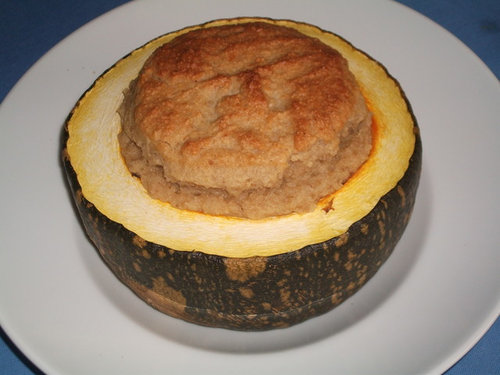Palav Kadoo
acorneti
9 years ago
Cucurbita moschata 'Palav Kadoo' was developed in central Asia from southern Russian Uzbekistan to Tajikistan. Not all of it's fruits are able to mature seed in my climate zone, but I have harvested very nice and full seed now from the fourth fruit, that I have opened.
Today I baked this giant muffin from the blossom end half of a Palav Kadoo with a dough like for muffins but with yoghurt, ginger, Chinese star anise, Garam Masala, cashew and spelt semolina.







Macmex
acornetiOriginal Author
Related Professionals
Rancho Palos Verdes Landscape Architects & Landscape Designers · Sand Springs Landscape Architects & Landscape Designers · Severn Landscape Architects & Landscape Designers · Farmington Landscape Contractors · Huntington Landscape Contractors · Lehigh Acres Landscape Contractors · Oklahoma City Landscape Contractors · Wentzville Landscape Contractors · West Allis Landscape Contractors · Chicago Ridge Landscape Contractors · Tyngsboro Landscape Contractors · Four Corners Landscape Contractors · Mooresville Roofing & Gutters · Reno Roofing & Gutters · The Colony Roofing & GuttersacornetiOriginal Author
acornetiOriginal Author
acornetiOriginal Author
fresc1000
acornetiOriginal Author
acornetiOriginal Author
fresc1000